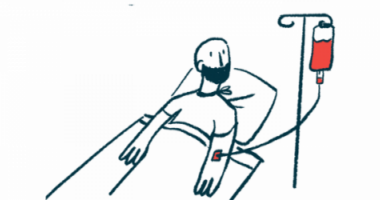Nexviazyme Approved in Canada as Next-gen ERT for Late-onset Pompe

Nexviazyme (avalglucosidase alfa), a next-generation enzyme replacement therapy, has been approved by Health Canada for people with late-onset Pompe disease ages 6 months and older.
“The Health Canada approval of Nexviazyme is an important milestone for Canadian Pompe patients and may represent a new standard of care,” Mark Tarnopolsky, MD, PhD, director of the neuromuscular and neurometabolic clinic at McMaster University Medical Center, in Ontario, said in a press release.
The therapy will now be available as a long-term treatment for patients across Canada with late-onset Pompe, a form of the rare genetic disorder in which symptoms begin not at birth or within the first year, but later in life, during childhood or adulthood. While there is no cure, therapies such as Nexviazyme can help patients manage their symptoms.
“This approval is incredible news for patients and their families who are living with this debilitating disease and have limited options,” added Brad Crittenden, executive director of the Canadian Association of Pompe.
Pompe disease is caused by mutations in the GAA gene, which encodes an enzyme needed to break down the complex sugar molecule glycogen. GAA mutations lead to impairments in this enzyme, ultimately resulting in the toxic buildup of glycogen in body tissues, especially in muscles.
As an enzyme replacement therapy (ERT), Nexviazyme essentially is a working version of the faulty enzyme that has been engineered to effectively be delivered to muscle cells and help to remove excess glycogen. The newly approved therapy is given by infusion into the bloodstream.
Nexviazyme recently received a similar approval in the U.S. for patients ages 1 and older. The therapy is made by Sanofi Genzyme, which also markets another approved ERT for Pompe disease called Myozyme (marketed as Lumizyme in the U.S.).
“Our main goal is to support those who suffer from chronic conditions and rare diseases like Pompe,” said Carrie McElroy, interim general manager for Sanofi Genzyme and interim Canada country lead.
“While no cure currently exists, it’s important to be able to provide new treatment options and continued research for Canadian patients living with Pompe disease,” McElroy added.
Sanofi lauded the Canadian approval but said it is “disappointed” with a recent reaffirmation, in the EU, of a decision by the Committee for Medicinal Products for Human Use — known as CHMP, and part of the European Medicines Agency.
CHMP reaffirmed its decision that Nexviazyme does not qualify as a new active substance, or NAS. Simply put, this means that the CHMP has determined that this treatment is not meaningfully different from already approved therapies in terms of molecular structure and/or clinical effectiveness.
“We are extremely disappointed with the CHMP’s opinion to deny designating avalglucosidase alfa [Nexviazyme] as a new active substance,” Bill Sibold, executive vice president of Sanofi Genzyme, said in a separate release.
According to Sibold, the CHMP’s decision fails to account for complexities in doing clinical tests for rare diseases, classified in the EU as disorders affecting fewer than five in 10,000 people. It also doesn’t account for the kind of small structural changes that can markedly affect the efficacy of ERTs, Sibold said.
“Today’s opinion fails to appropriately recognize and reward innovation and undermines the intended spirit of the NAS designation,” Sibold said. “We strongly advocate that the EMA revisit and redefine the methodology used to assess the NAS status of biological products within the European Union, especially in the context of rare diseases.”







